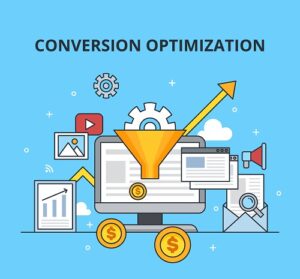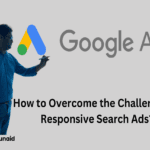- November 12, 2024
- by admin
- Case Study
- 0 Comments
Read on to this blog to learn how to create a conversion rate optimization strategy for your business.
Firstly, we start by breaking down the following terminologies.
What is a Conversion?
A conversion refers to the process in which a lead (or prospect) converts from a general visitor to a paid user or subscriber. It means every time a lead changes into your customer, you get a conversion.
What is a Conversion Rate?
The conversion rate is the percentage of website or landing page visitors who convert into your subscribers, paid users, or customers.
Here’s the Conversion Rate Formula:
Conversion rate = (conversions/total visitors) × 100%
The meaning of “conversion” may vary depending on your business goals. Some common types of conversions are as follows:
- Subscribe to the newsletter
- Registration on the site
- Making a purchase
- Downloading mobile applications or eBooks
- Sharing a blog post on social media
- Clicking a specific button or link
- Signing up for email notifications
- Filling out a form (like a lead generation form, contact us form, etc.)
- Engaging with your online chat
What is Conversion Rate Optimization?
Conversion rate optimization (CRO) is a strategy used by marketers to enhance a visitor’s experience on your website or other channels and persuade them to perform a more desirable action (like buying your product, adding items to a cart, etc.) to meet your business goal, i.e., conversion.

In addition, conversion rate optimization gives you insights into your visitor’s behaviour and helps you understand how to improve your user experience (UX) to get the maximum conversions.
Tips to Create a Conversion Rate Optimization (CRO) Strategy
The following are some tips to create a successful conversion rate optimization (CRO) strategy:
Create a dedicated landing page: Creating a well-designed landing page is a first and foremost thing you need to do for the success of your website. The more attractively designed your website is, the more traction it will get. And, especially if you are using paid advertising services (like Pay-Per-Click, Google Ads, Facebook Ads, Bing Ads, etc.), you should redirect your traffic to a dedicated landing page.
Make your website’s user experience as simple as possible: Simplicity is the key when it comes to designing your website, particularly the homepage. Visitors can form their first impression of your website in just a fraction of a second, so to hold their attention you need to make your website’s user experience as simple as possible. Also, avoid using too many images and text on your website. Instead, keep your brand message and UI/UX simple, relatable, and clear.
Make compelling and engaging website copy: The key difference between visitors leaving your website without taking any desired action and staying on your website and doing the essential activities is the “website copy or content”.
In other words, while having an attractive and well-designed website might help you get more traffic, words have the power to engage the visitors and turn them into your potential customers.
Therefore, always write compelling and engaging website content that highlights the unique selling proposition of your brand, product, or service.
Perform Google Analytics analysis: Google Analytics is a web analytics service offered by Google that can provide real-time statistics about your website traffic and site visitors. So, you can perform a Google Analytics analysis of your website to track and analyse your site’s key performance indicators like unique website visitors, average time on page, page load speed, bounce rate, conversion rate, etc.
Perform a competitor analysis (UX experience): A competitive analysis of your competitors’ websites provides significant insights into their products, user experience, and marketing tactics.
Although you wouldn’t need to imitate your competitors’ website experience, it’s still crucial to know how they’re interacting with their users so you can assess where you are lacking and what you need to do to provide the best user experience (UX) possible to your audience.
Create CTAs that anticipated the user needs: A call-to-action (CTA) on a website is a request to the visitors to take the desired action. This action could be anything, like contact us, sign up for a newsletter, reserve a spot in a webinar, buy now, learn more, etc. The more compelling and clear your CTA is, the more leads it can drive.
Takeaways
The best conversion strategies can not only help you save money, time, and effort but also open the door to new growth opportunities that were previously unknown to you. In short, you are wasting your money, if you’re not optimizing your conversion rate.
Moreover, if you’re a thriving business, you can hire a digital agency to increase your website’s conversion rate. Because Conversion rate optimization strategies in digital marketing companies (experienced CRO agencies) are designed to improve your conversions drastically and are capable of turning around your revenue, consulting with a digital marketing consultant in Delhi can further enhance your results.



